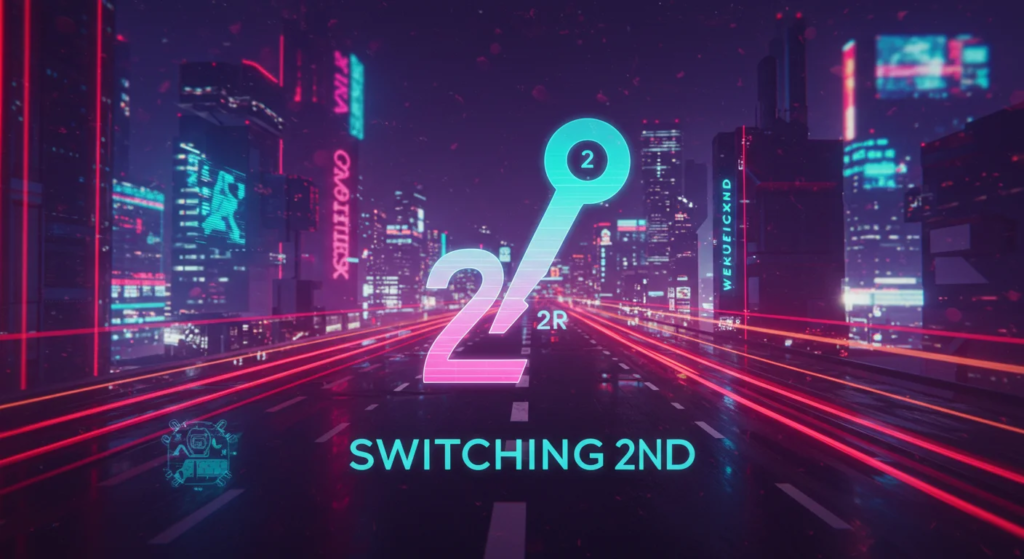
Switching 2nd is a unique practice that plays a significant role in communication, whether it’s in conversations, storytelling, or even written content. It involves shifting between different perspectives or voices in the context of communication. At its core, switching 2nd allows people to express themselves more effectively by navigating through varying viewpoints, emotions, or tones.
In this article, we will explore what switching 2nd is, how it works, why it’s important, and how it influences communication, storytelling, and interpersonal interactions. We will dive deep into the mechanics behind switching between perspectives and voices, with examples from real-world scenarios to help illustrate the concept.
What is Switching 2nd?
Switching 2nd refers to the process of alternating between different perspectives or voices in communication, either consciously or unconsciously. The term “2nd” is often associated with the second person perspective, which uses the pronoun “you” to address the listener or reader directly. This approach contrasts with the first-person perspective (I, we) and third-person perspective (he, she, they).
When switching 2nd is used in writing, speech, or storytelling, the shift in perspective can change the way the message is received. It has the potential to create intimacy, engage the audience, or even introduce multiple viewpoints into a single piece of communication.

The Importance of Switching 2nd in Communication
Switching 2nd can be a powerful tool in communication for several reasons. It allows speakers or writers to engage their audience, personalize the message, and create dynamic conversations. The benefits of switching 2nd include:
- Engagement: Addressing the audience directly by switching to the second person can make the communication feel more personal. It draws the listener or reader into the narrative, making them feel as though they are part of the story or conversation.
- Variety of Perspectives: In storytelling, switching between different perspectives can offer a richer and more nuanced view of events. It allows for multiple viewpoints to be expressed, which can lead to a more comprehensive understanding of the situation.
- Effective Persuasion: The second person voice (“you”) is often used in persuasive writing or speech. By using this perspective, communicators can directly appeal to the emotions, experiences, or decisions of the audience, encouraging them to take action.
- Clarifying Ideas: Sometimes, switching perspectives helps clarify complex ideas. By shifting to the second person, the speaker or writer can make abstract concepts more relatable and easier to understand.
Also Read: Pyntekvister: The Timeless Beauty and Versatility of Artificial Branches
How Switching 2nd Works: Exploring the Mechanisms
Understanding how switching 2nd functions requires recognizing how people interpret different perspectives. Here’s a breakdown of how the shift works in various forms of communication:
- In Speech: In everyday conversations, switching 2nd is common when a speaker addresses the listener directly. For example, consider the difference between these two sentences:
- “I think this is a great idea.”
- “You should try this idea; it’s amazing.”
- “I think this is a great idea.”
- In the first sentence, the speaker is using the first-person perspective. In the second, they switch to the second person, directly engaging the listener and making the message more personal.
- In Writing: Writers can use switching 2nd in various ways, such as in instructional writing, storytelling, or creative works. It’s common in self-help books, guides, and advertisements, where the writer wants to speak directly to the reader.
For instance, an advertisement might say, “You deserve the best, so choose our product today!” The direct address draws in the reader, making the message feel more urgent and tailored to them. - In Storytelling: In literature, switching 2nd person can sometimes be used to place the reader in the shoes of a character. For example, a second-person narrative might start with, “You walk into the room and feel the tension in the air.” This immersive style engages the reader, creating a sense of involvement in the plot.
Some authors use second-person perspectives in novels, which is a less common but powerful way of storytelling. One famous example is the book “If on a Winter’s Night a Traveler” by Italo Calvino.
Real-World Examples of Switching 2nd
To make switching 2nd clearer, let’s look at some real-world examples across different domains:
Also Raed”: Ashcroft Capital Lawsuit: What You Need to Know
- Marketing and Advertising: Marketing strategies often rely on switching 2nd to persuade and engage their target audience. For example, a company might use phrases like, “You won’t want to miss this sale!” or “Get the best deals when you shop with us.”
This technique helps create a sense of urgency, encouraging the reader to act quickly. The use of “you” makes the message feel tailored to the reader’s specific needs or desires. - Customer Service: In customer service communication, switching 2nd can make interactions feel more personal and supportive. For example, a customer service representative might say, “We understand your concern, and we’re here to help you resolve this issue as quickly as possible.”
By directly addressing the customer with “you,” the interaction feels more human and less transactional. - Instructional Content: Educational materials or how-to guides often switch to the second person to provide clear, direct instructions. For example, “To fix the issue, you need to first restart your computer.” This method of writing makes instructions easier to follow, as the reader is being directly addressed.
- Personalized Communication: In personal communication, especially in informal settings like social media or texts, switching 2nd is common. Phrases like “You’re going to love this!” or “What do you think about this?” engage the audience and make conversations feel more lively and direct.
Why Switching 2nd Can Be Effective
- Emotional Connection: Switching to the second person allows the speaker or writer to connect with the audience on a more emotional level. It feels like the message is crafted specifically for them, making it more impactful and relatable.
- Direct Appeal: Using “you” is a direct form of communication, which can be more compelling than other perspectives. It feels less formal and can motivate people to take action, such as making a purchase, signing up for a service, or changing their behavior.
- Creating a Sense of Inclusion: When people are addressed in the second person, they may feel more involved in the conversation or story. It can foster a sense of inclusion and community, which is especially important in marketing or social interactions.
Challenges of Switching 2nd
While switching 2nd can be a powerful tool, it can also present challenges if not used carefully. For example:
- Overuse: If the second person perspective is overused, it can feel too forceful or artificial. It’s important to balance it with other perspectives to maintain variety and avoid making the audience feel uncomfortable.
- Context Sensitivity: Switching 2nd may not always be appropriate for every situation. For example, in formal writing or academic contexts, switching to “you” may not be suitable and could undermine the professional tone.
- Clarity Issues: When switching between perspectives too frequently, the communication may become confusing for the audience. It’s important to make sure that the shifts are purposeful and help clarify the message, not hinder it.
Also Read: Pigeimmo: Revolutionizing the Real Estate Industry with Smart Automation
Frequently Asked Questions (FAQs)
What does switching 2nd mean in writing?
Switching 2nd in writing refers to the use of the second-person perspective, where the writer directly addresses the reader using “you.” This technique is used to engage the reader, create a more personalized experience, and make the writing more dynamic.
Why is switching 2nd important in communication?
Switching 2nd allows for a more engaging, direct, and personal form of communication. It helps create an emotional connection, clarifies ideas, and can persuade or motivate the audience to take action.
Can switching 2nd be used in all forms of communication?
Switching 2nd is most effective in informal communication, marketing, and instructional content. However, it may not always be appropriate in formal contexts, such as academic papers or professional reports, where a more detached or neutral tone is expected.
When should I avoid switching 2nd?
It’s best to avoid switching 2nd in situations where a more formal tone is required. In academic writing, business reports, or professional correspondence, using “you” might feel too casual or conversational.
How can switching 2nd enhance storytelling?
In storytelling, switching 2nd can immerse the reader in the narrative, making them feel as though they are part of the story. It creates a more interactive and engaging experience, drawing the reader into the plot.
Conclusion
Switching 2nd is a versatile and powerful technique in communication, whether it’s in conversations, writing, marketing, or storytelling. By shifting between perspectives, communicators can create more engaging, personalized, and effective interactions. However, it’s important to use this approach thoughtfully to ensure that it enhances the message and doesn’t overwhelm or confuse the audience.
Understanding the nuances of switching 2nd will help you communicate more effectively, whether you’re addressing an individual, a group, or a wide audience.



